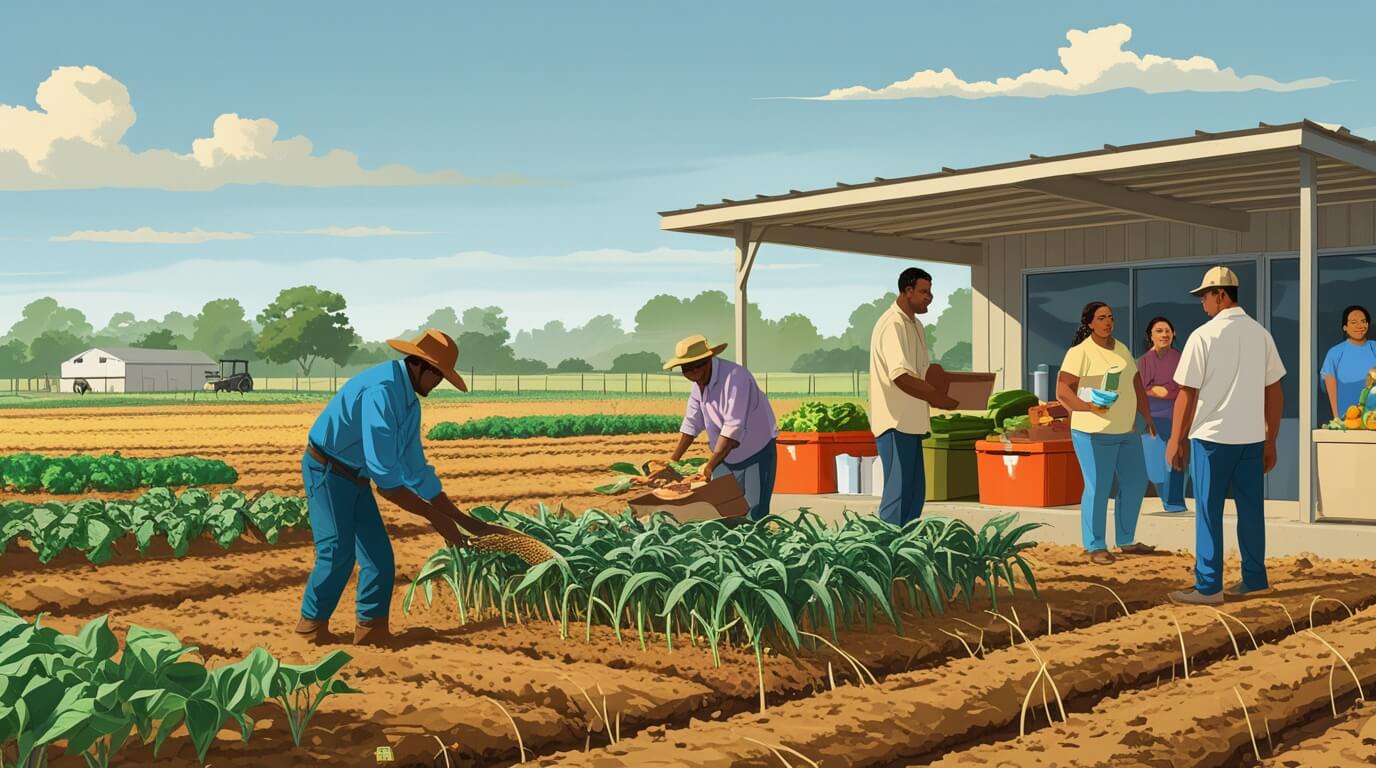The Impact of Climate Change on Food Security

Climate change is no longer a distant threat; it is a present-day crisis that affects agriculture, food availability, and access worldwide. Rising temperatures, shifting precipitation patterns, and extreme weather events disrupt food production, threaten livelihoods, and exacerbate food insecurity, particularly among the most vulnerable populations. Understanding how climate change interacts with food systems is essential for building resilient communities and safeguarding global nutrition.
How Climate Change Affects Food Security
1. Decline in Agricultural Productivity
- Increasing global temperatures, prolonged droughts, and erratic rainfall patterns have a direct impact on crop yields. Staple crops such as wheat, rice, and maize are highly sensitive to climatic fluctuations. Regions already struggling with food scarcity face additional risks of crop failures and reduced harvests, which makes communities increasingly dependent on food assistance programs and local initiatives like food banks.
- Moreover, shifting climate zones may force farmers to adapt by changing planting dates, switching crop varieties, or investing in irrigation and protective technologies, which are not always financially accessible to smallholder farmers.
2. Impact on Livestock and Fisheries
- Climate change affects more than crops—livestock and fisheries are highly vulnerable:
- Livestock: Heat stress reduces productivity, fertility, and overall health of animals. Livestock-dependent communities face economic and nutritional challenges.
- Fisheries: Ocean warming, acidification, and changing currents disrupt marine ecosystems, affecting fish populations crucial for dietary protein in many countries (Protecting Our Pollinators – Why Bees Matter).
- The cascading effects on both land and marine food systems highlight the interconnectedness of climate, ecosystems, and nutrition.
3. Economic and Social Inequalities
- The effects of climate change are not uniform. Low-income populations are disproportionately affected because they often lack resources to adapt to food scarcity or rising prices. Women and children are especially vulnerable, as they face barriers in accessing education, healthcare, and equitable nutrition (The Role of Women’s Empowerment in Poverty Reduction).
- Rising food prices and localized crop failures contribute to economic instability, forcing families to rely on cheaper, less nutritious diets, perpetuating cycles of malnutrition and poverty.
Strategies to Protect Food Security
1. Climate-Resilient Agriculture
- Farmers can adopt sustainable farming practices to maintain productivity despite climate volatility:
- Planting drought-resistant and heat-tolerant crops
- Integrating agroforestry systems to conserve soil and water
- Using organic composting and regenerative techniques to improve soil health (The Importance of Composting – Reducing Landfill Waste)
- These practices help mitigate losses, reduce environmental impact, and promote long-term sustainability.
2. Food System Diversification
- Diversifying food sources reduces vulnerability:
- Supporting local crops and traditional food varieties
- Encouraging aquaculture and sustainable fisheries
- Implementing urban and rooftop farming programs to supply fresh produce locally
- By broadening the range of food options, communities become less dependent on a single crop or import, increasing resilience to climate shocks.
3. Policy and Global Cooperation
- Government policies play a critical role:
- Climate-smart agricultural policies and crop insurance schemes protect farmers financially
- Fair trade practices ensure small-scale producers can sell products sustainably (Understanding Fair Trade Practices and Why They Matter)
- International collaboration supports aid distribution and technology transfer to vulnerable regions
- Global coordination is essential because food security is a shared responsibility that transcends borders.
4. Community-Based Initiatives
- Local solutions empower communities to build resilience:
- Community gardens and urban farming initiatives provide fresh produce and improve food access
- Water conservation education ensures sustainable irrigation practices (How to Reduce Your Water Usage at Home – Eco-Friendly Garden)
- Supporting smallholder farmers with training and resources enhances productivity and nutrition
- These grassroots efforts complement national policies and provide immediate, tangible benefits to communities.
Moving Toward a Resilient Food System
Addressing the intersection of climate change and food security requires a multi-layered approach:
- Integrating sustainable agricultural practices with climate adaptation
- Strengthening food assistance programs and local supply chains
- Encouraging community engagement, education, and resource sharing
- Advocating for global cooperation and equitable policy implementation
By taking these steps, societies can protect vulnerable populations, improve nutrition, and maintain stability even in the face of climate challenges.
References & Further Reading
